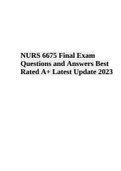College aantekeningen
Hunter College -BIOL 100 Sheppard Lahiji: Chapter 2 : Chemical context of life
Comprehensive and detailed notes covering Chapter 2 of Biol 100 at Hunter College. Perfect for students seeking a deeper understanding of the material. Based on Professor Sheppard's slides - Everything said in her voice recordings is written in my notes !
[Meer zien]












